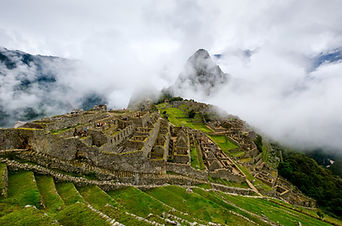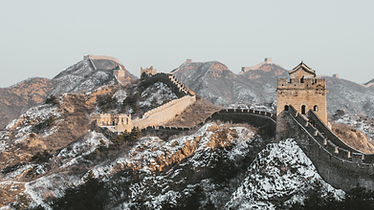
Top 10 | Read more
UNESCO World Haritage
UNESCO World Heritage Sites are more than just iconic landmarks; they are treasures that represent the cultural, historical, and natural beauty of our planet. These sites, recognized for their universal value, offer a glimpse into the remarkable achievements of humanity and the breathtaking wonders of nature. From the ancient ruins of Machu Picchu in Peru to the stunning coral reefs of the Great Barrier Reef in Australia, the world’s top 10 UNESCO World Heritage Sites showcase the diversity and richness of our global heritage. Whether you're exploring the architectural marvels of the Pyramids of Giza or wandering through the pristine forests of the Amazon, these sites offer unforgettable experiences that connect us to the past, present, and future.
* Affiliate links are marked with an asterisk (*). We may earn a commission at no extra cost to you.
1. Great Wall of China – China
Highlights: One of the most iconic structures in the world, the Great Wall stretches over 13,000 miles across northern China.
Significance: A remarkable feat of ancient engineering, it symbolizes China's historical strength and resilience.
2. Machu Picchu – Peru
Highlights: An ancient Incan city perched high in the Andes Mountains, known for its archaeological significance and breathtaking views.
Significance: A testament to Incan civilization, it attracts millions of visitors and is a UNESCO World Heritage Site since 1983.
3. Pyramids of Giza – Egypt
Highlights: The last of the Seven Wonders of the Ancient World, these monumental tombs showcase ancient Egyptian architectural genius.
Significance: The Great Pyramid of Giza is the largest and most famous, reflecting the grandeur of Egypt's pharaohs.
4. Taj Mahal – India
Highlights: A stunning white marble mausoleum built by Emperor Shah Jahan in memory of his wife Mumtaz Mahal.
Significance: A symbol of love and one of the most beautiful buildings in the world, it is recognized for its architectural beauty and historical significance.
5. Acropolis of Athens – Greece
Highlights: An ancient citadel containing significant structures like the Parthenon, dedicated to the goddess Athena.
Significance: A symbol of classical civilization, it represents the cultural and political achievements of ancient Greece.
6. Galápagos Islands – Ecuador
Highlights: An archipelago renowned for its unique biodiversity and role in Charles Darwin's theory of evolution.
Significance: Home to numerous endemic species, the islands are crucial for conservation and scientific research.
7. Stonehenge – United Kingdom
Highlights: A prehistoric monument consisting of a ring of standing stones, each around 13 feet high and seven feet wide.
Significance: An important archaeological site, Stonehenge is believed to have been constructed for ceremonial purposes.
8. Venice and its Lagoon – Italy
Highlights: The city of Venice, built on a network of canals, is famous for its art, architecture, and unique cityscape.
Significance: Recognized for its historical significance and as a center of trade and cultural exchange for centuries.
9. Yellowstone National Park – USA
Highlights: The first national park in the world, known for its geothermal features, including geysers, hot springs, and diverse wildlife.
Significance: A symbol of conservation, it plays a vital role in preserving America's natural heritage.
10. Historic Centre of Rome – Italy
Highlights: Rome's historic center features ancient ruins, Renaissance palaces, and significant landmarks like the Colosseum and the Vatican.
Significance: A treasure trove of history and culture, it showcases the evolution of architecture and urban planning over centuries.
-
Whether you're looking for accommodation, flights, rental cars, activities, or a complete travel package – it's easy to compare and organize everything in one place. You can find and book everything on Expedia *
Machu Picchu

Great Wall of China



